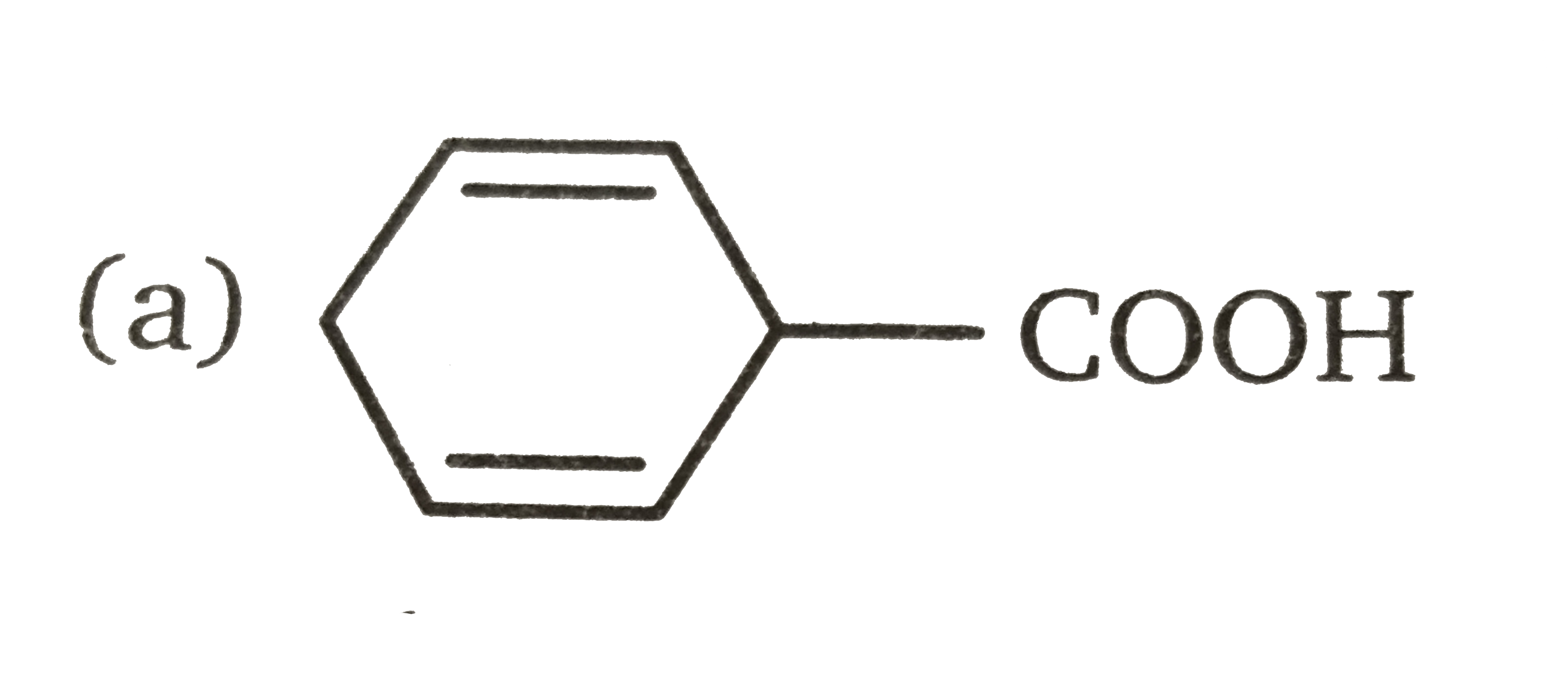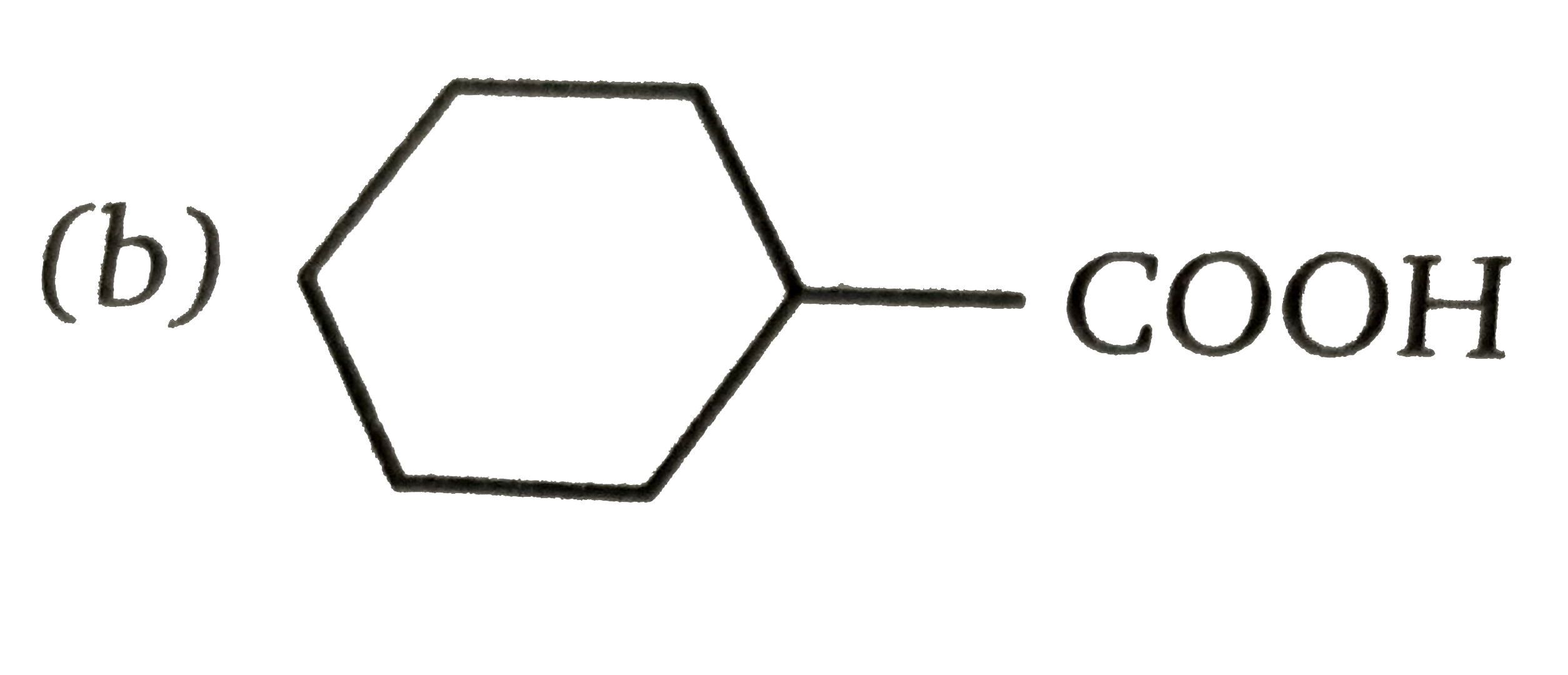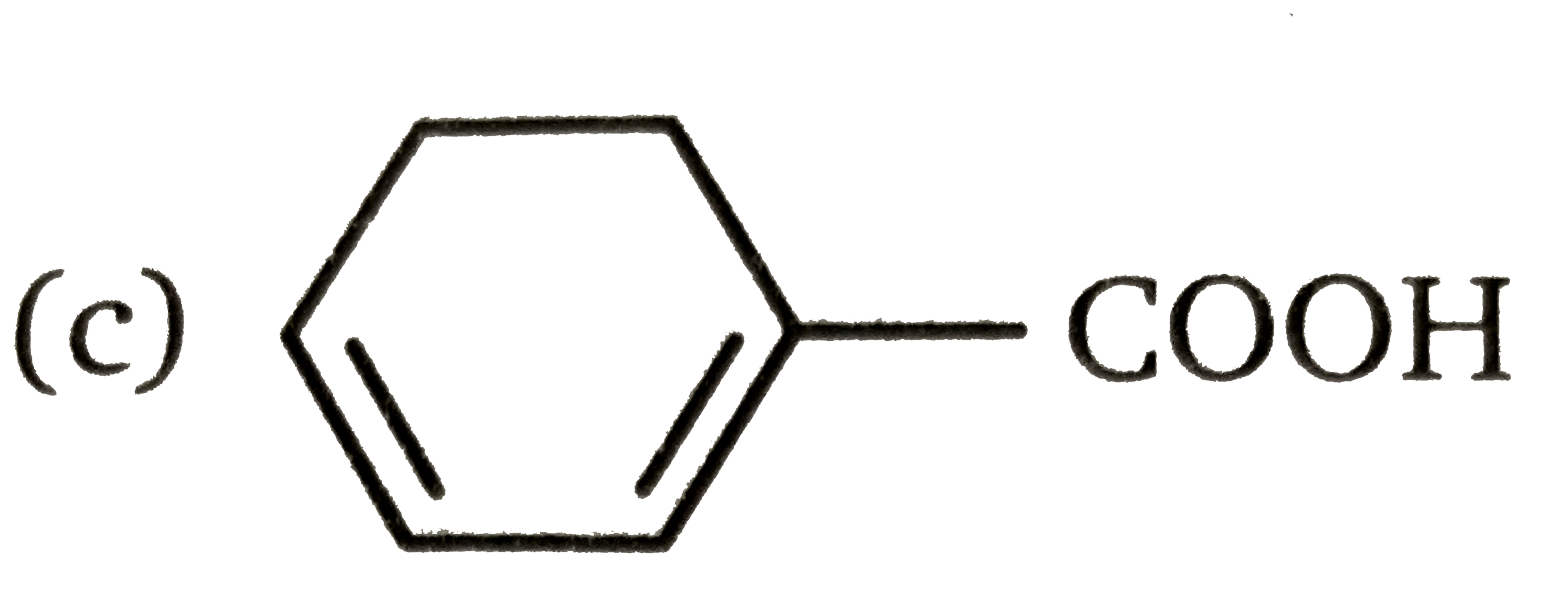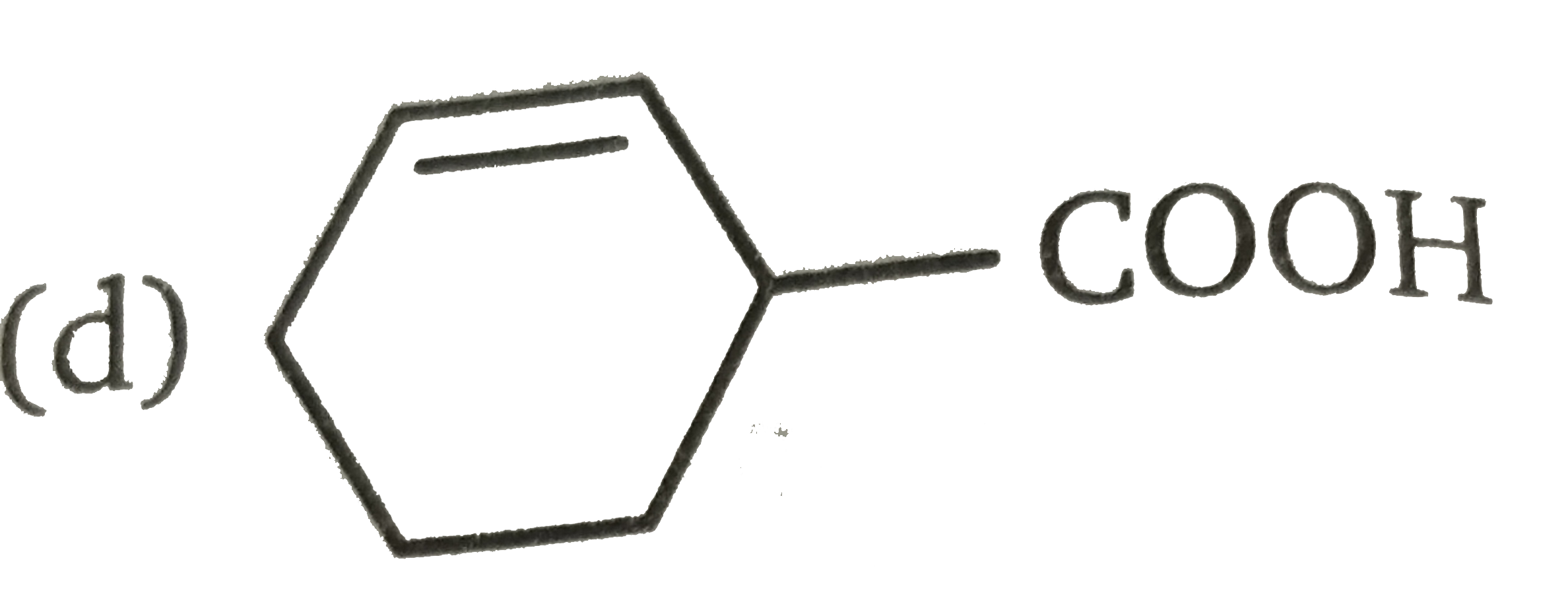Give two methods of preparation of benzoic acid.
Explain the acidic character of benzoic acid.
Text Solution
(a) Preparation
(i) By the oxidation of toluene Toluene is oxidised to benzoic acid by heating with dilute nitric acid, alkaline KMnO4 or with CrO3 in glacial acetic acid.

(ii) It is also prepared by the oxidation of benzyl chloride in the presence of alkaline KMnO4. The contents are heated for about three hours. Now the solution so obtained is acidified by adding concentrated HCl.
Benzoic acid separates out as a crystalline compound.

The white product is filtered and recrystallised from hot water.
(iii) By carboxylation of Grignard.s reagent CO2 gas is passed through the ethereal solution of Grignard.s reagent and the addition product fromed is hydrolysed with a mineral acid.

Acidic character
It is a weak acid but slightly stronger than acetic acid. The reason for this is that benzoate ion is more stable than acetate ion. It is explained below:

The resonating structures of acetate ion and benzoate ion can be written as follows:

Negative charge is dispersed on two oxygen atoms and there are two resonating structures.

The negative charge is dispersed on two oxygen atoms in both the cases but the number of resonating structures in benzoate ion are more than those in acetate ion.
Hence, benzoate ion is more stable than acetate ion and therefore, benzoic acid is more acidic.
Effect of substituent on the acid strength
Case I The presence of electron releasing group (+I groups such as CH3,C2H5 etc.) decrease the acidic strength. Such a group tends to destabilise the benzoate ion by the intensification of negative charge. Thus,

Case II The presence of electron withdrawing groups (-I group such as -Cl, NO2, -CN etc.) increase the acidic strength. Such groups tend to stabilise the benzoate ion by the dispersal of negative charge.
Thus, we write

|
Similar Questions
Knowledge Check
Salicylic acid as compared to benzoic acid
Ais more acidicBhas same acidityChas less acidityDnone of these.The Birch reduction of benzoic acid gives :
A B
B C
C D
D
The Birch reduction of benzoic acid gives:
A B
B C
C D
D
Give industrial preparation of benzoic acid from toluene.
View SolutionNitration of benzoic acid gives m-nitrobenzoic acid.
View SolutionNitration of benzoic acid gives m-nitrobenzoic acid.
View SolutionpKa value of 4- nitrobenzoic acid to lower than that of benzoic acid . Explain
View SolutionExplain why formic acid is stronger acid than benzoic acid.
View Solution
